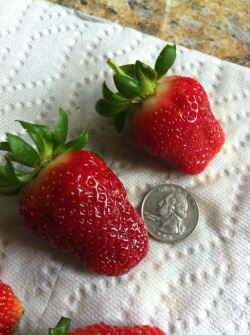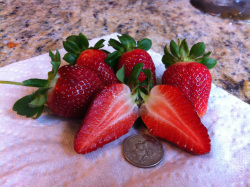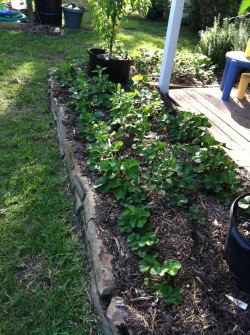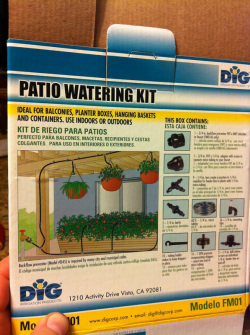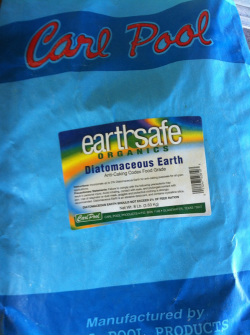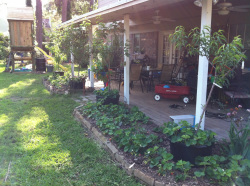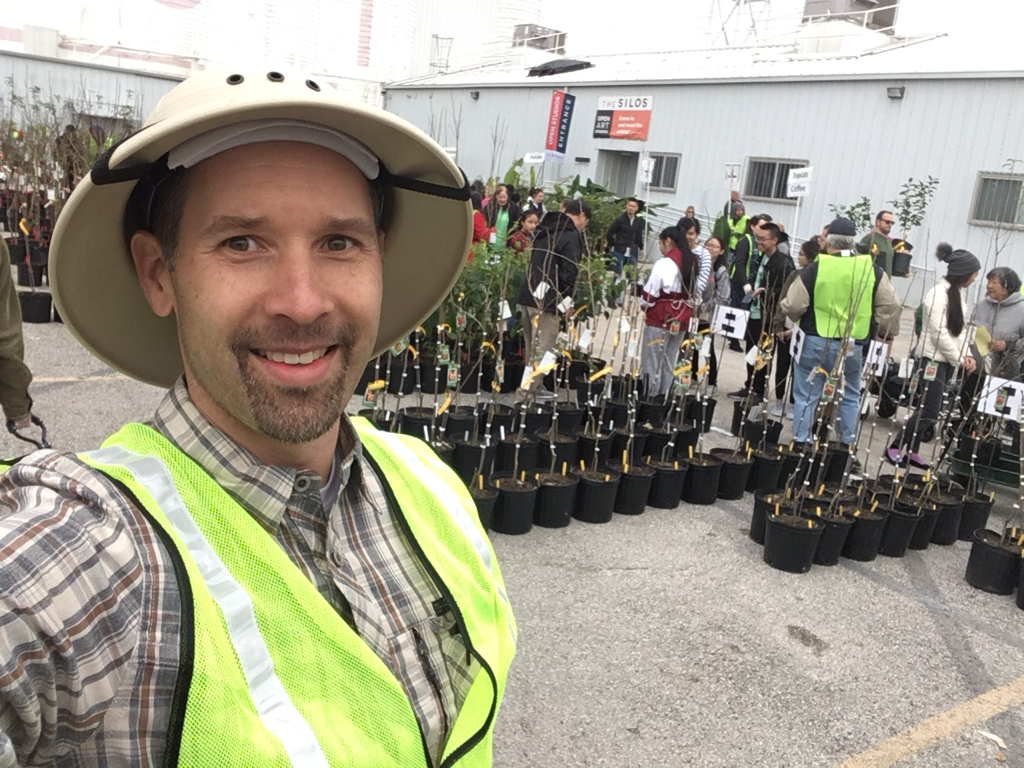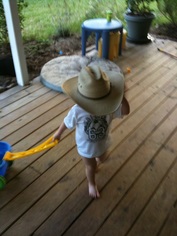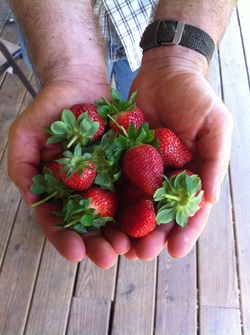
I had previously used cheap black soaker hoses to irrigate the strawberry bed, but they always got clogged, sprung leaks, or didn't water evenly. I've learned my lesson, and have since upgraded to a drip system. It works wonderfully! I was even able to run emitters to the peach and cherry trees that are growing in containers set into the strawberry beds. Switching to this style of irrigation has made a big difference. The strawberry plants are large and healthy, and the berries themselves are larger than in previous years. I'm hopeful that this system will hold up through the year, and help me keep the plants alive through the hottest parts of the summer when I usually lose several. I've also planted some pepper plants in the bed, which I'm hoping will shade the strawberry plants when it gets really hot.
Surprisingly, the biggest pest problem I've had with strawberries has not been from birds, but from pill bugs (aka roly polys). These little crustaceans (that's right, they're not insects) will eat holes in the strawberries, and then eat it from the inside out. I also sometimes find earwigs damaging the fruit, but not as often. This year I decided to fight back using diatomaceous earth. Diatomacous earth is composed of the remains of diatoms, which are single-celled algae that create a shell of silica. Under a microscope the shells look like shards of glass. Diatomaceous earth works by dehydrating the bodies of insects and other little pests, and by getting in between the joints of their exoskeletons and tearing them up. I've been dusting the strawberry beds every couple of weeks, and it seems to have really made a dent in the pill bug population. I like this approach because diatomaceous earth is cheap, organic, and completely harmless to humans. It kills the pests by physcially, not by being toxic. You can get an 8 pound bag at Plants for All Seasons for just a few bucks, which should last for a couple of years.
